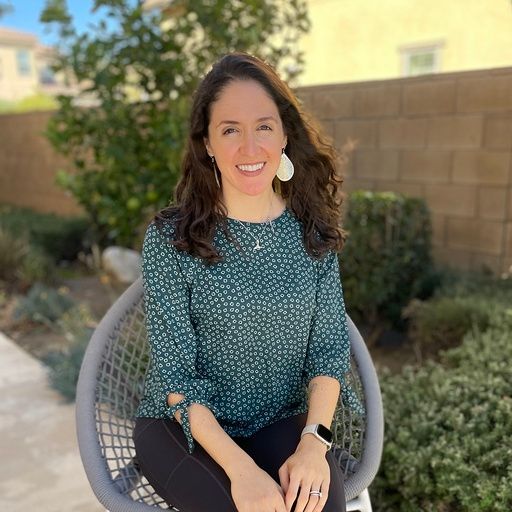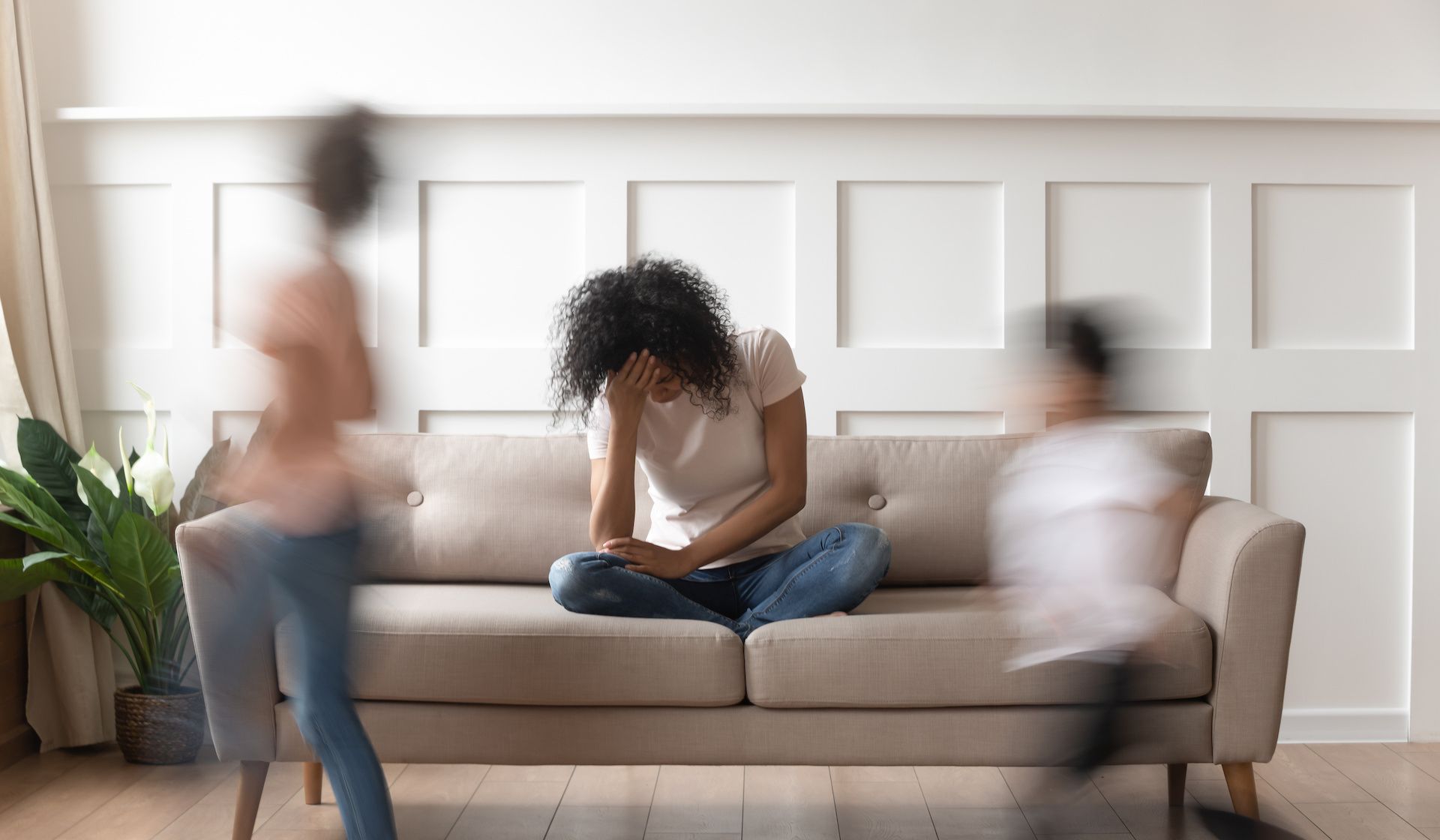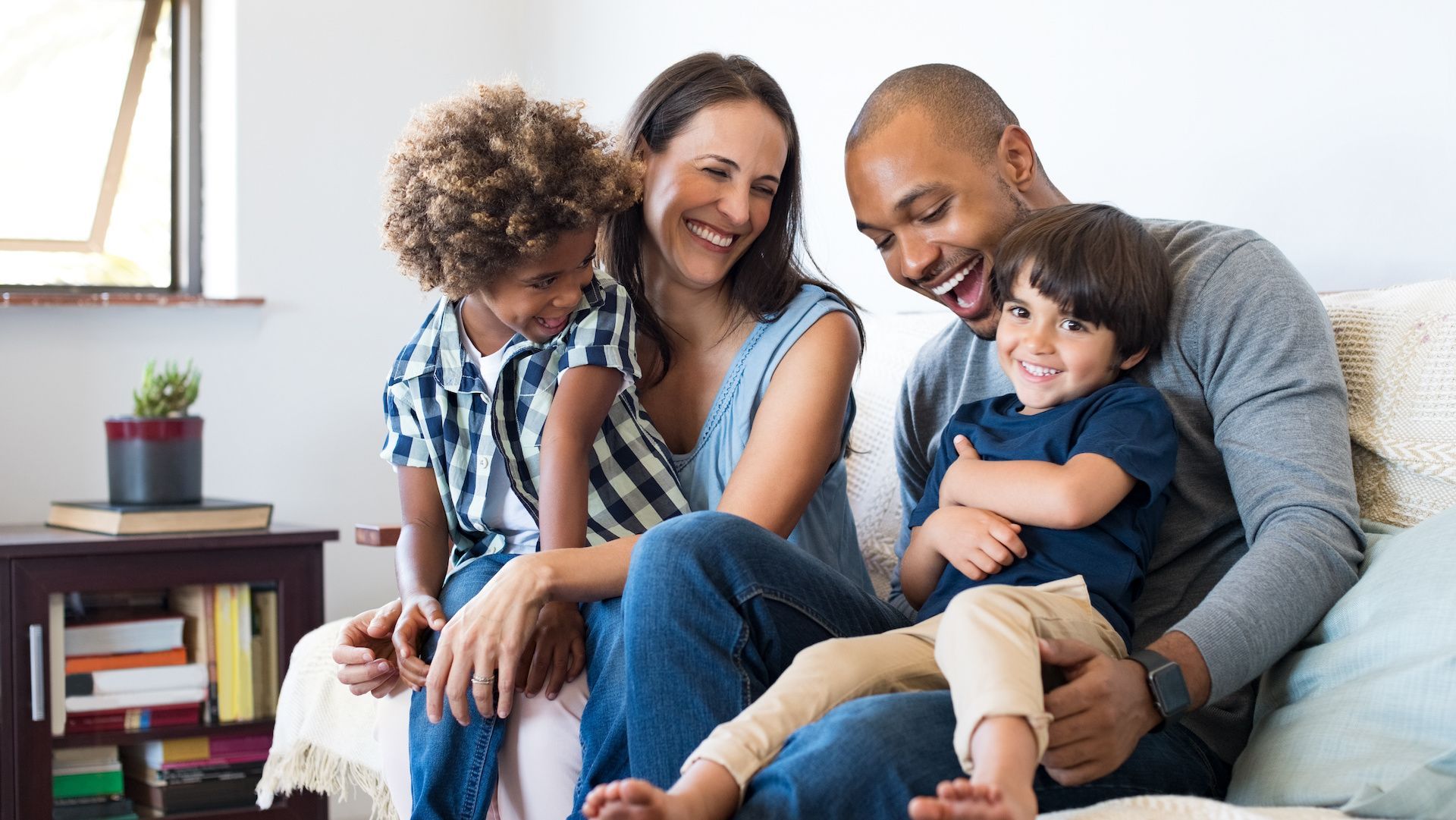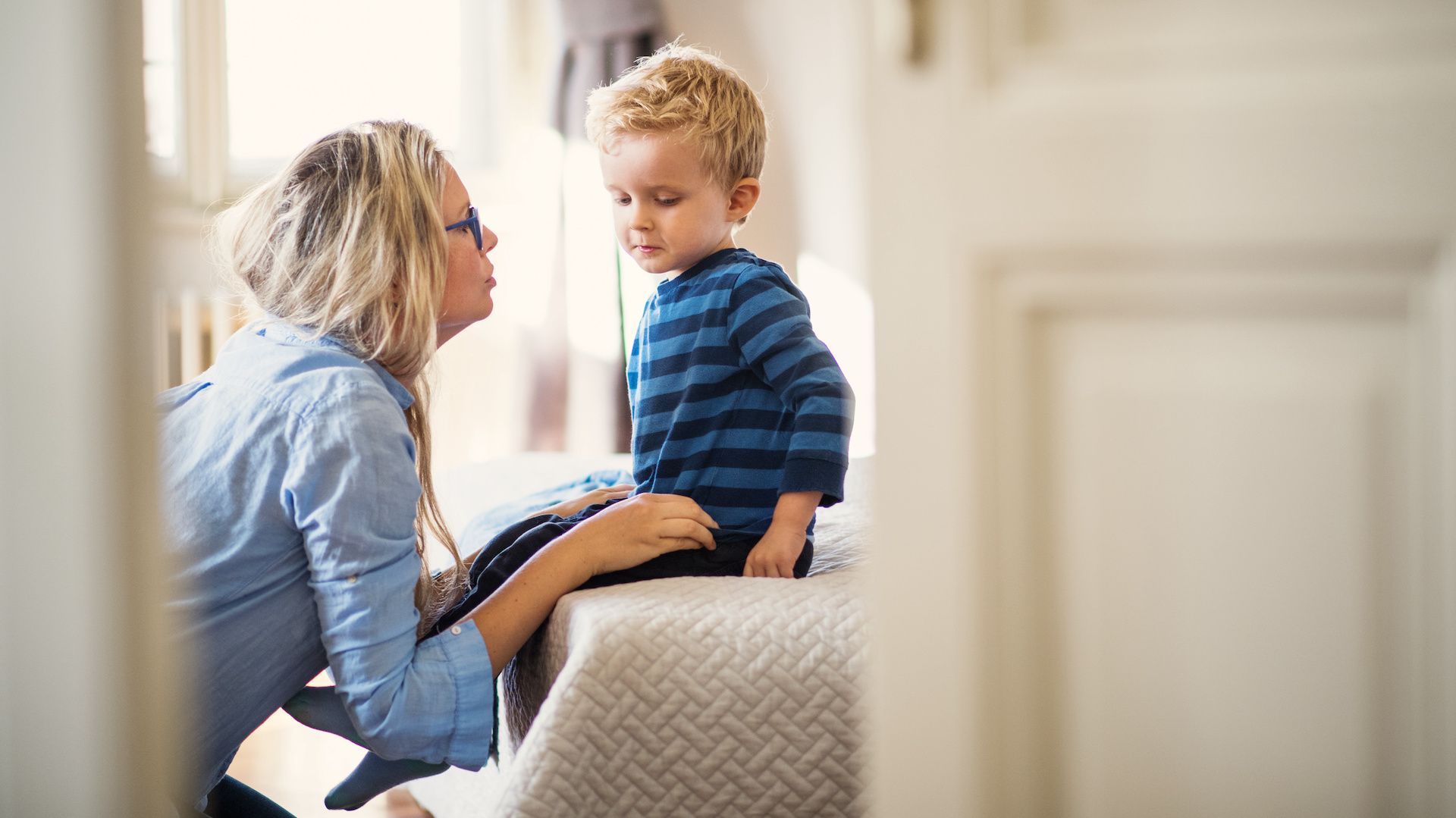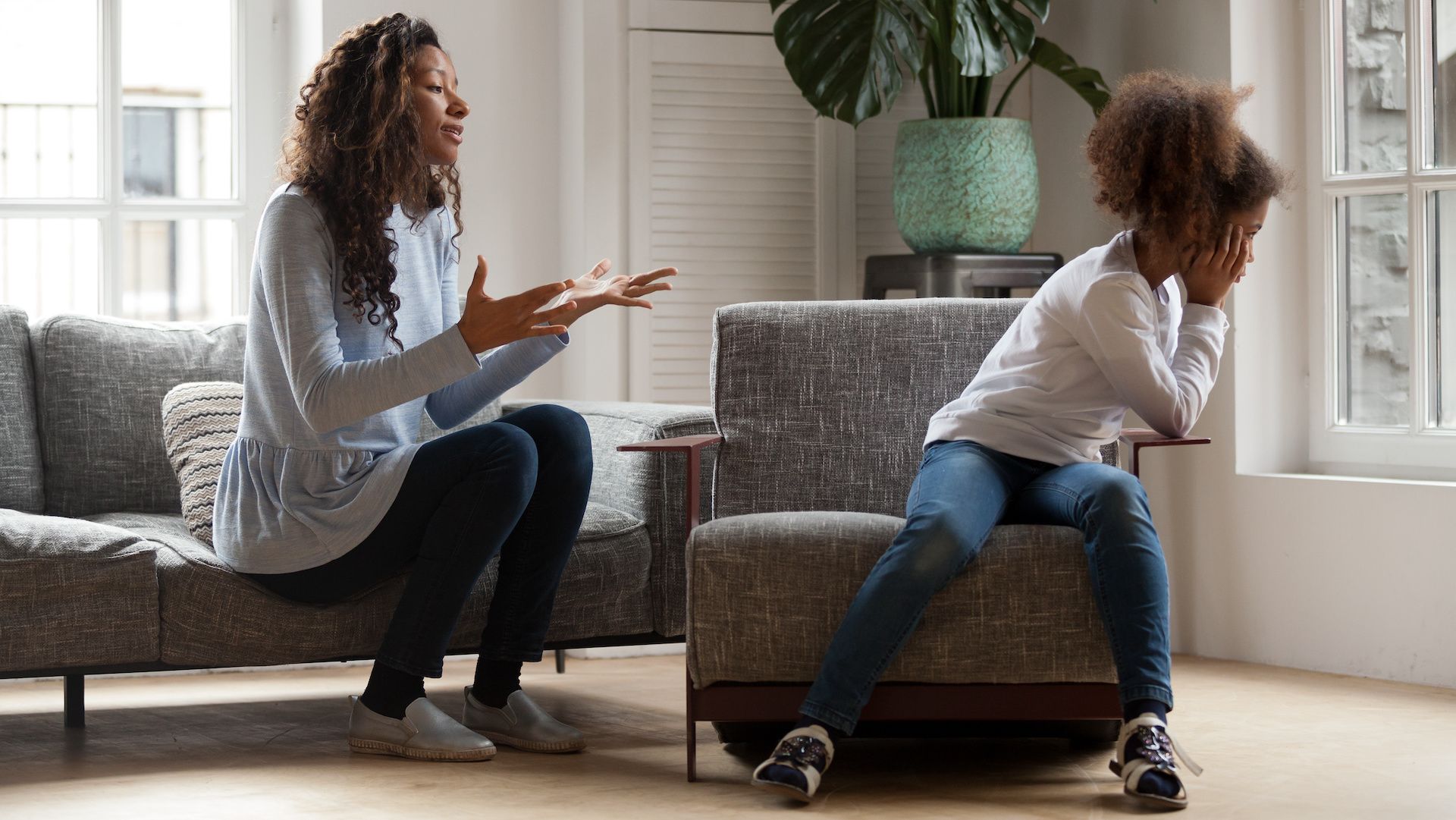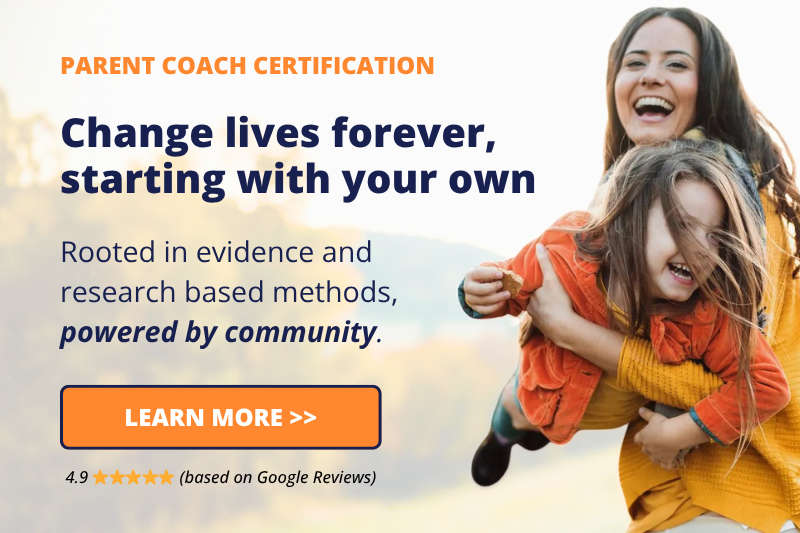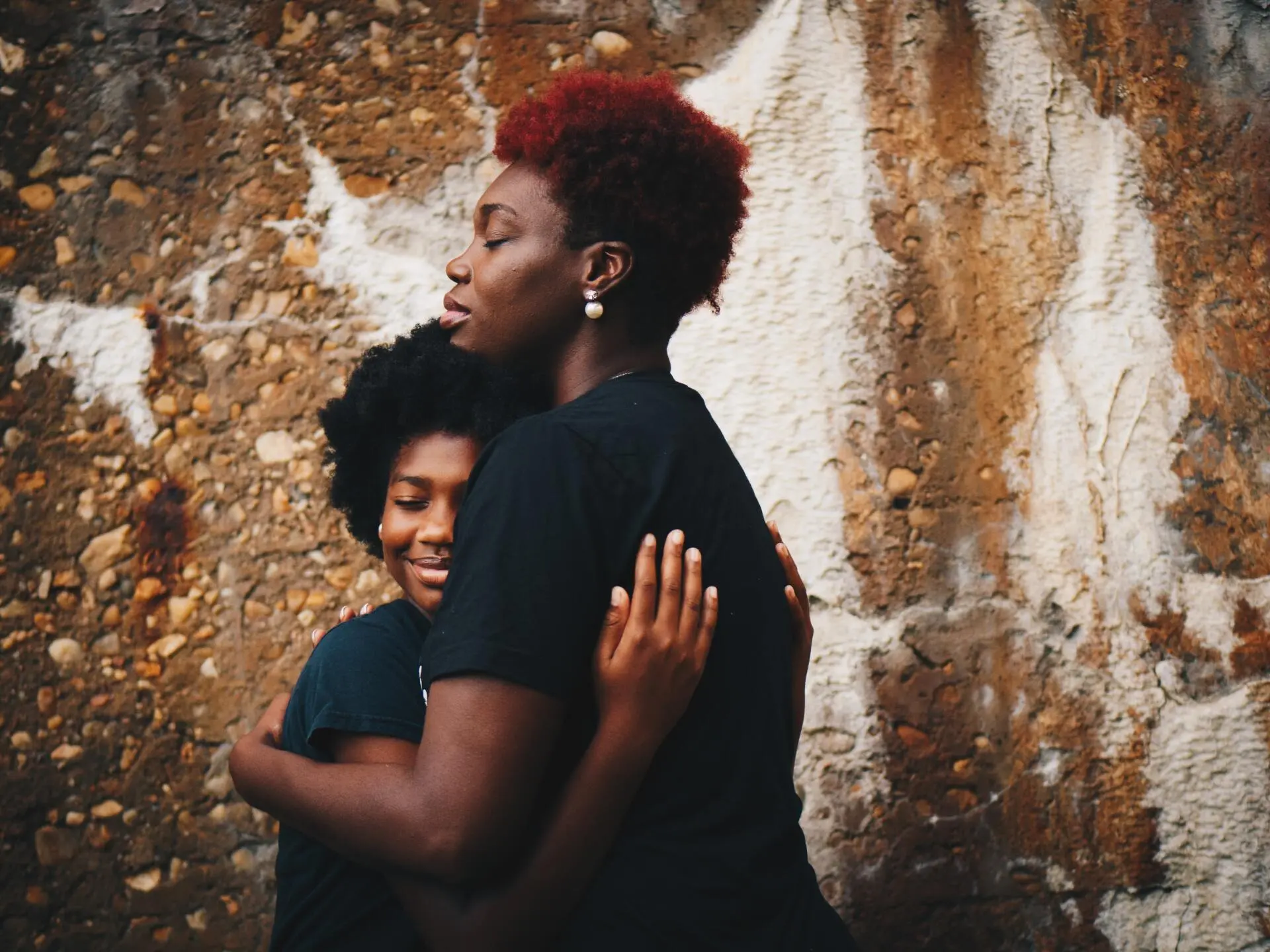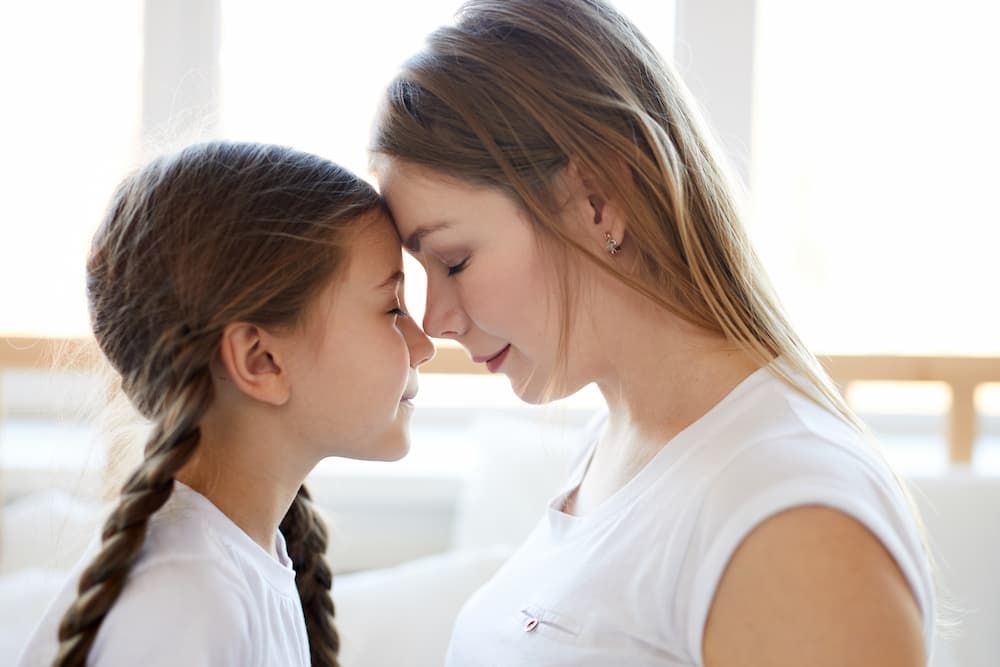Embracing Big Emotions: The Role of Parents in Emotional Regulation
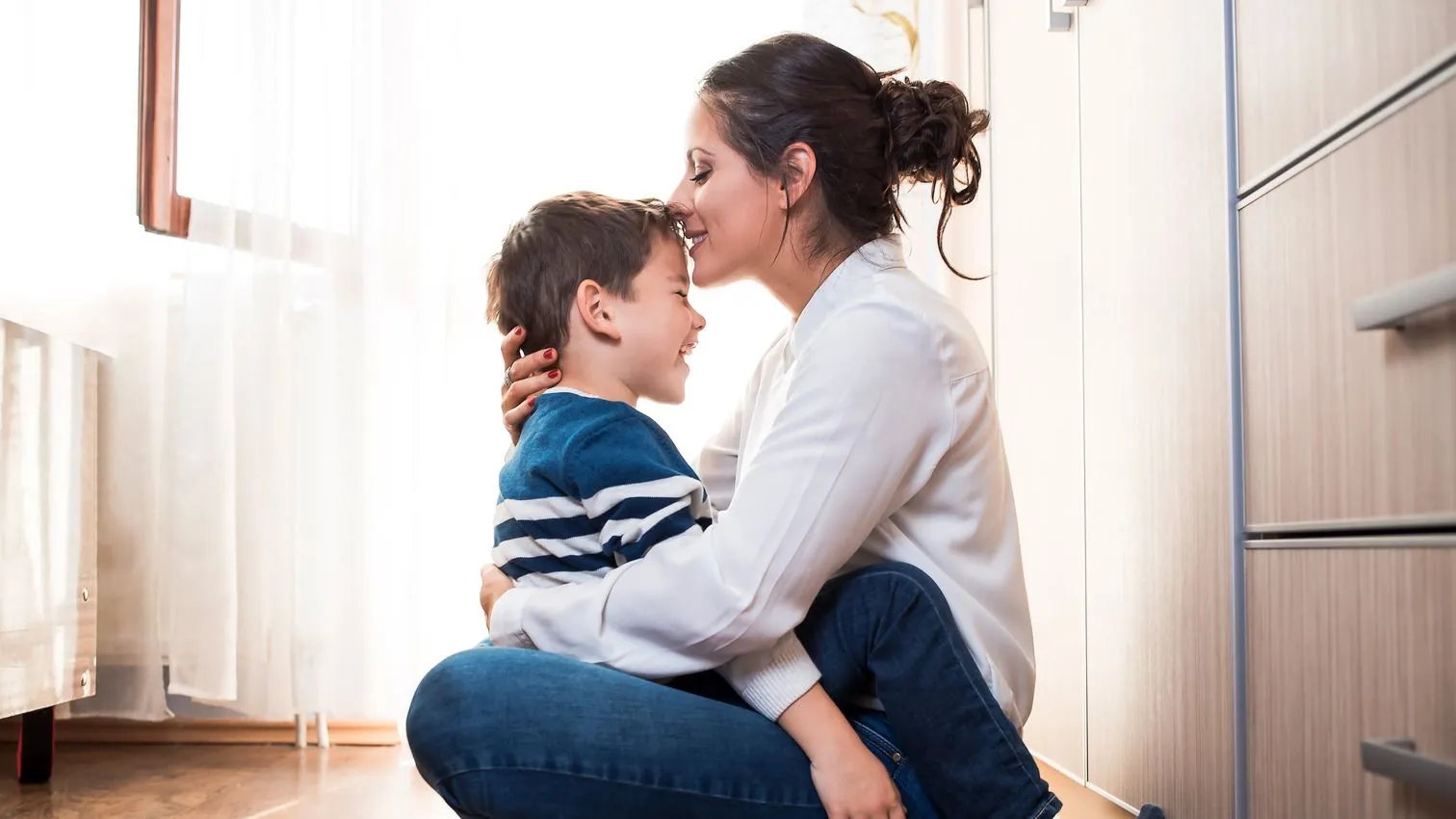
Your child is crying and yelling at you. You were already overstimulated before this moment because parenting is hard. And right now, the sound of their voice is enough to spiral your nervous system into fight or flight—let alone the day you’ve had and the mental load you are carrying.
You know you’re supposed to act loving and say, “You’re allowed to feel this way,” but everything inside you wants to scream out: “If you don’t stop acting like this, then no TV today!” The tense words and threats start pouring out of you as if you have no control. A voice inside your head whispers, ‘You’re failing. You’re supposed to allow emotions.’ Now you’re on the verge of tears, too.
These moments can feel overwhelming, and many parents wonder how to manage them. It can be easy to turn to the sea of parenting advice on social media, but often, this makes us question ourselves even more.
It can feel both stressful and exciting that we are parenting in a time of human history where emotional regulation is being explored and emphasized. Developmental research has shown that
emotional regulation is a key metric for developmental success, and parents and educators are interested in how to foster emotional regulation.
But here’s the challenge: We haven’t been taught how to do this. No one has modeled to us how to feel our emotions and become emotionally intelligent. While we can understand the research philosophically, most of us don’t yet have the skills to support this healthy emotional development.
Many of us grew up in a culture where emotional suppression was the norm. When we had big emotions, we were often dismissed, ignored, or even punished. We were met with words like, “You better stop crying, or I’ll give you something to cry about”
As children, we learned that having big emotions meant feeling disconnected from our caregivers. We suppressed emotions to maintain connection and safety. Now as adults, many of us struggle to tolerate or even identify our emotions, perpetuating the same patterns in our parenting.
It's both a hard and an incredible time to be a parent. At Jai Institute for Parenting, we see these parenting challenges as growth opportunities and get excited about them. In this article, we hope to get you excited, too, and empower you to see the growth and transformation waiting for you within the challenges.
Let’s start with what emotional regulation really means and how it can help us stay present in difficult moments.
What is Emotional Regulation?
Emotional regulation is not about feeling calm — it’s about staying present with emotions and responding mindfully, not reacting impulsively. When we practice mindfulness, we engage the prefrontal cortex, the part of the brain responsible for intentionality and higher-level decision-making. This allows us to navigate our emotions without becoming overwhelmed or trying to fix or suppress them.
The goal of regulation is not to force calmness but to honor our real experience. Forcing ourselves to "calm down" often leads to disconnection and compartmentalization. Instead, emotional regulation invites us to sit with our emotions, allowing them to exist without judgment or reaction.
For example, when I notice intense feelings rising, I pause and connect with myself. I remind myself, “I can handle this feeling.” I pay attention to my body and where I feel tension, offering myself the same compassion I would give a loved one. I might say to myself: “It makes sense why I feel this way. This is hard.”
From this mindful place of self-awareness, I can reflect and respond with intention rather than react out of frustration. This shift not only prevents guilt or regret over impulsive reactions but also allows me to communicate more clearly and compassionately. The beauty of mindful regulation is that it increases the likelihood of being heard and having our needs met. Emotional regulation is like a superpower we’ve forgotten how to use. As we rediscover it for ourselves, we can model it for our children, equipping them with tools to navigate their emotions with confidence and grace.
How do Parents Teach Emotional Regulation?
Teaching emotional regulation goes beyond buying EQ tools and inviting our kids to expand their emotional literacy. The most potent and effective way to teach our kids about emotional regulation is to practice and embody it ourselves.
We can begin by asking ourselves: How are we modeling emotional regulation—not mechanically to ‘teach’ them but honestly in a way that helps us? Our kids will have the best chance for healthy emotional regulation when we lead from our own embodiment.
Before our kids can learn from our modeling, they need us to help them regulate. Research shows that co-regulation is essential for children in early development. Children before age seven have limited developmental capabilities to self-regulate, so they depend on us to help them regulate. This doesn’t mean telling them things like “calm down” and “take a deep breath.” It goes much deeper than this—into a felt sense nervous system mirroring process, whereby kids feel and mirror our nervous system. We can use the “right words,” but our kids can feel what is congruent with our true state beneath the words.
How to Coregulate
Coregulation means regulating yourself and sharing that regulation with your child.
Picture a hard parenting moment when your first impulse is to yell or threaten. Instead, you pause and turn inward to be present with this moment without reacting to patterns of fixing or changing. You put a hand on your heart, and you begin to breathe. You notice your impulses to yell, and you hear your inner critic telling yourself: “You suck at being a parent.” You take another deep breath. You may even feel tears rising—it feels good to have this loving attention from yourself. “This is a hard moment. All these feelings make sense. I am here with me.” You breathe as you feel yourself soften.
Now, you open your eyes and turn towards your child. You invite them into your presence with non-verbal cues of empathy with your soft eyes and head nods. You signal to them, “I’ve got you, and I’ve got me,” through presence. You verbally attune to their feelings by saying, “Mmmhmm,” “I am here with you,” and “We are going to get through this, my love.” You see your child soften. They come in for a hug. You celebrate how loving and beautiful this moment feels.
This is what is possible with coregulation.
We often don’t know how to handle emotions, and we panic. Did you know that emotions only last 90 seconds? Research shows that every emotion lasts 90 seconds at maximum—anything that goes beyond that is an emotional loop of stories and rumination patterns. Imagination that emotions are a wave that we get to learn how to surf.
This work of helping our kids grow and learn how to be with emotions begins inside of us. Parenting isn’t just about raising children; it’s about raising ourselves. It’s an invitation to
deepen our understanding of who we are and who we wish to become, both as individuals and as a family unit.
Why Should We Feel Our Feelings?
Feelings are a fundamental part of our human experience. Much of the suffering that exists in the world comes from a place denying our feelings and needs. When we are denied these basic needs again and again, we either become obedient and mechanical to fit in, or we become rebellious and ostracized from our community and belonging. Dr. Gabor Mate, in his book When the Body Says No: The Cost of Hidden Stress, explains that suppressed emotions stay within the body and lead to chronic illnesses:
“In each of the individual histories of illness in this book, one or more aspects of emotional competence was significantly compromised, usually in ways entirely unknown to the person involved. Emotional competence is what we need to develop if we are to protect ourselves from the hidden stresses that create a risk to health, and it is what we need to regain if we are to heal. We need to foster emotional competence in our children as the best preventive medicine.”
Now that we understand the importance of emotional regulation, let’s explore how to bring this practice into daily life.
Tools and Skills for Practicing Emotional Regulation
Here are practical tools to help you build emotional regulation skills.
1. Practice being present with yourself during emotional triggers
See if you can create space between the feeling and the patterned reaction. Find a quiet spot to turn inward and check in with yourself. How are you feeling? How is your body? Give yourself a little hug or massage and say, “This is hard, and it makes sense why I am having this reaction.”
2. Listen to your kids deeply
Listening is often splitting attention between what we hear and formulating our responses. Practice listening to your kids with an open heart and mind.
3. Create safe spaces for emotional expression
Establish a routine for connecting with and checking in with all family members about their emotions. Use curiosity and validation to signal safety and openness, such as “I want to hear what that moment was like for you” and “It makes sense why you would feel that way.”
4. Repair after rupture
When a moment goes wrong, come back together, reflect, and reconnect. Rewind the moment and role-play how it could have gone better, modeling forgiveness and applying lessons to the moment.
5. Use “I” statements
Model responsibility and practice statements like “I feel” and “I need” to mature unskillful expressions of pain like blame, shame, judgment, and criticism.
And always remember that you and your child have the best intentions. Everyone has hard moments together. Mean words and hurtful behaviors are unskillful expressions of feelings and needs. These hard moments don’t signal that you and your kids are failing. Instead, they signal opportunities for growth. How exciting—this is where we get to learn, practice, and grow together.
As we learn to regulate ourselves, we create ripples that transform our parenting, family dynamics, and beyond. Parenting is an invitation to grow alongside our children, and we aren’t meant to do this alone. At Jai Institute for Parenting, we see these challenges as opportunities for growth. Through our supportive community of parents and coaches, we find the strength to thrive and transform together.
If you want to be part of this transformative community, join our
7-months Parent Coaching
Program, become a certified parent coach, and grow alongside your children and community.
Meet Your Author, Marissa Goldenstein
Marissa Goldenstein, a Jai Certified Master Parent Coach, is devoted to guiding parents toward mindfulness and joy in their parenting journey. Marissa demonstrates a proven commitment to innovative education, having a history as a co-founder of a visionary elementary school that focused on cultivating changemakers through curiosity, connection, and community. Leveraging her MBA and an MA in Experimental Psychology, she seamlessly integrates both business and human development insights into her coaching practice.
Beyond coaching, Marissa embraces mindfulness in her own parenting alongside her partner and their two sons, engaging in family dance parties and adventurous learning experiences whenever possible.
http://marissagoldenstein.com
Share This Article:
Curious for more?


